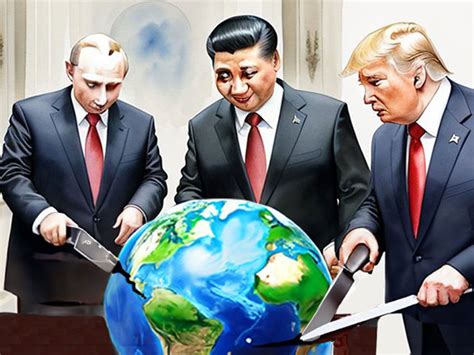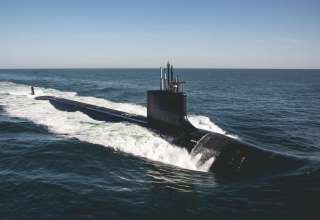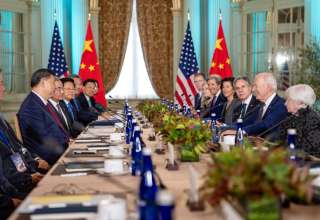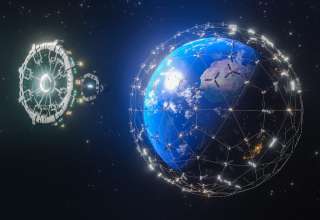By Brian Boyd
Overview Update
The first half of 2025 saw billions of words recorded by the monopoly media concerning the styles and foibles of various political leaders of the major powers such as Trump, Putin, Xi, Macron and Starmer. The endless optics, emphasising their spin and ramblings, are given shallow analysis of what is the real basis of growing global geopolitical tensions and the consequential, ever expanding arms race.
Style over substance, more often than not, dominates most media reportage.
The global power balance between the main great power blocs-US, China, EU, Russia and Britain, is facing a shakedown “re-alignment” impacting on their respective economic interests. This is not some new scenario, as some media commentators try to make out. It has been going on for years, as the worldwide economic framework, created by the US after World War II, has come under challenge.
Within the US superpower there is a political struggle about how the US Imperial empire will position itself, going forward into the rest of the 21st-century. There are arguments, for example, against US funding for the Ukraine war effort and some acknowledgment of the “failed adventurism of the past”. Instead there are calls to promote a future US strategy of “prioritised deterrence”.
[Over fifteen years ago Obama made the promise to “restore America” on the world stage, including a “pivot to Asia”; subsequently this was followed by repetitive narratives, based on “American exceptionalism”, such as- “Make America Great Again”.]For public consumption it is claimed that the US has had “a loss of standing” in its relation to the other great power blocs, especially China and its “emergence as an economic power”.
Main Game
Simply the US is accelerating a process to revamp “how the world works”. The “strategic rivalry with China”, is being is being described as “the main game in town”. The US is moving from years of “managing competition” to “winning the competition”, with China now being deemed as an “existential threat”. The US imperial re-set is seeing a more overt “transactional US order… focused tightly on whether a relationship directly benefits America”. The US Administration has “cast America’s international role in the most narrow sense of ‘America First’.”
It is US evolving subsidised protectionism versus China’s export-led strategy, also backed up by a national subsidised structure. The struggle is spilling over into their respective spheres of influence. Like the other great power blocs, neither the US or China are benign in their global economic activities and aspirations.
In turn, the EU, Britain, Russia, India and Japan are caught up in their own turbulent efforts to “re-balance” and adjust to the ‘reshaping’ of ‘international commerce’. These major industrialised economies struggle to put in place ‘guardrails’, as the tension between the “two great geo-political powers” unfolds. The impacts on their spheres of influence, especially as the worldwide flow of goods and capital are being buffeted, are causing disruption over a prolonged period of time.
The US has increasingly shown it cares little, more than ever, for alliances and global institutions. The World Bank, IMF, WTO and the UN, were used to uphold its rules-based free trade order, for over seventy years. Lately the use of tariffs and other levers are being used “to meddle in another country’s domestic politics… the US has never cared for any rules that didn’t suit it. All pretense has been shed”.
‘Rules-based order felled, it’s every man for himself’, was a recent heading in the Melbourne Herald Sun (26 June 2025). Reporter Matt Bach wrote: “The rules-based international order is crumbling. The United Nations is dead, I suspect”.
Much is made of China’s “economic statecraft” and how it has “distorted the global trading system”, over recent decades. For example, recently China has moved to wean itself off imported oil and reviving domestic production. [Petro China is reported to have expended nearly $A60 billion dollars in 2024, nearly as much as the US’s Exxon-Mobil and Chevron combined].
China’s dominance of global manufacturing remains one of the main drivers of the US’s increasingly aggressive trade policies. More broadly the US makes no secret of wanting to dilute China’s outsized share of global metals refining and finishing. It wants to reduce the worldwide dependence “on China… being the factory of the world”.
China has accelerated shipping investments around the world, off the back of its Belt and Road initiative. In developing countries throughout Africa, Asia and South America, Chinese government-run companies have established many new ports. China has also a port foothold in Europe. A recent report indicated that China’s Belt and Road initiative had entered into $US 124 billion in new deals with other countries, in the first six months of 2025, “it’s fastest pace yet”.
China has dominance in global rare earths production, to the chagrin of the US. This is forcing the US to pump into this specialised market, subsidies and tax breaks of hundreds of millions of dollars, for new mines and processing plants internally and internationally.
By 2023 it is claimed that China also “has built the foundations to position itself as the world’s leading science and technology superpower”. There has been a struggle for some time over China’s access to high-level computer chips and artificial intelligence (A I) research. Washington has made no secret of trying “too slow China’s A I progress through export controls and other restrictions, that limit its access to US capital, talent and advanced technologies”.
[”Victory in the global A I race carries high stakes. A I is expected to up-end economies and militaries, and leadership in the sector is seen as critical to future global influence…” (Wall Street Journal 3/8/25) ].Some commentators openly claim that China’s “nationalist state capitalism”, since it joined the “international economic order”, has seen the US actively contributing to “the demise of the rules-based trading system”, in order to match “China’s non-market practices”.
Media reports are now suggesting “America’s much vaunted free-market system” is shifting “in some quarters… [to]… “a form of state-managed capitalism”. Many US companies are “regular recipient(s) of subsidies or grants from the government”.
“It now borders on conventional wisdom that to compete with China in the global economy, the US and other countries are increasingly having to become more like it.
“Just look at how America has adopted trade and investment restrictions to build and protect US industry, to give it a level playing field with China, which has long pursued such policies”[Richard McGregor, A F R, 30/8/25].
There is no doubt ,China too is focused on its own re-set agenda, matching the US’s M A G A notion with its own ‘2015 Made in China’ policy direction.
Bodies like the OECD rail against the “lost trust” in global trade, that is challenging “all economies worldwide… causing increases in costs… unfair trade practices…(and undermining)… supply change resilience”.
Such economic battle fronts are driving transformational geopolitical consequences, that, in turn, drive speculation about open conflict in the near future.








